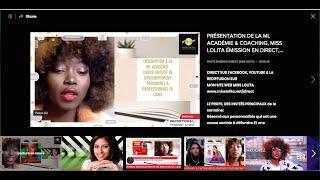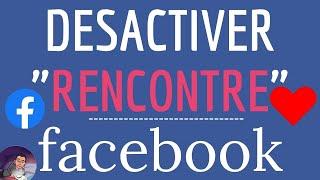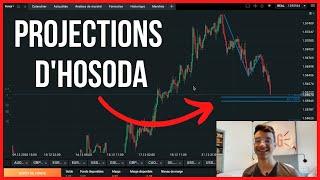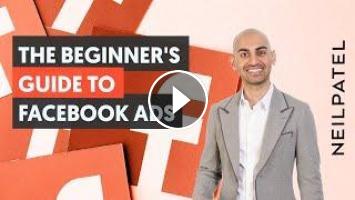Today I'm going to be teaching you about Facebook ads.
RESOURCES & LINKS:
____________________________________________
Download the Assets mentioned in this course: https://neilpatel.com/training/
Ubersuggest: https://neilpatel.com/ubersuggest/
____________________________________________
I would first recommend that you check out the Facebook Ad Library where you can put in any of your competitors pages and you can see the ads that are working for them really well. This will give you ideas of where to start.
You can also start with manual bidding. So, when you're setting up a ad, manual bidding is just as simple as selecting bids. What are you willing to pay for a impression, a click, conversion? And manual bidding is really simple because it has a lot of variables for you want to bid for the highest value, you can control your return on ad spend.
You can also do things like have a target cost. There's also lowest cost. Using the lowest cost bid strategy is recommended if you care more about spending your entire budget, to spend your budget as effectively as possible, this bidding strategy tends to be the best.
There's also bid caps, you want to make sure that you don't spend too much. And this is what the bid cap is. Cost cap is something similar but for costs as well in which you want to make sure you're getting the lowest cost per event.
If you haven't used the Facebook Pixel, you need to start using this. This will help Facebook determine when you have conversions and when you don't. If they can track a conversion, whether it's a email, a purchase or any other thing that you want like a lead, it can allow Facebook to better optimize who they show the ads to because they can find similar people which will then help you generate way more conversions and spend less money.
To be successful in advertising, you need to also understand the Facebook Auction and then of course targeting as well. The Facebook Auction formula is total value equals advertiser bid times estimated action rates plus relevancy and quality.
That's also why I do custom audiences where you can upload your existing customer list and they'll find other people who match those users or you can Pixel your page and remarket them, or even better, you can do things like look alike audiences.
I also recommend that you layer targeting, right? You don't have to just use one target type, remember you can use as many as possible.
And you're going to get these sales through images or videos, or in other words, any ad type and I want to go over a few of the ad types.
There's also an Instant Experience. With Instant Experiences, you may find that the conversion rates to a full close may not always be as great as you want but it's worth testing.
Also try out a Collection. A Collection is experience that involves a cover image or a video followed by several images of a product.
When you're managing your ads, there's the Ad Managers within Facebook and that allows you to manage your ads, not just on Facebook, but also through Messenger, Instagram and any other future platforms that they either end up acquiring, or they end up integrating within the whole Facebook ad ecosystem.
Ad Manager's amazing too, they have a lot of great analytics. If you haven't, make sure you check it out. When you're setting all this up choose the right bidding strategy, there's so many options. You can automate it, you can do it manual.
Next thing you know they spend all this money, literally hundreds and thousands, they think they're doing well and all of a sudden it hits them that they're starting to lose money. And even when you set things up correctly and things could be working, you also find that as you scale, sometimes the metrics just get out of whack and they're not profitable anymore.
So, some best practices for you for aspect ratios, for image ads on Facebook.
A lot of people are using smartphones. Think of it this way, Facebook generates more revenue from smartphones and mobile phones than they do from desktop computers. So, pick formats that fit both desktop and mobile devices. And that's very, very important.
You can end up finding these templates and they work for any type of industry. This will help you get started at neilpatel.com/training, click on Facebook Unlocked and under week two, this will be the second lesson. You can find all the templates, the worksheets and everything that goes along with this course to get you the best results.
► If you need help growing your business check out my ad agency Neil Patel Digital @ https://neilpateldigital.com/
►Subscribe: https://goo.gl/ScRTwc to learn more secret SEO tips.
►Find me on Facebook: https://www.facebook.com/neilkpatel/
►On Instagram: https://instagram.com/neilpatel/
https://youtu.be/IuS6CO14e1s
#SEO #NeilPatel #DigitalMarketing
RESOURCES & LINKS:
____________________________________________
Download the Assets mentioned in this course: https://neilpatel.com/training/
Ubersuggest: https://neilpatel.com/ubersuggest/
____________________________________________
I would first recommend that you check out the Facebook Ad Library where you can put in any of your competitors pages and you can see the ads that are working for them really well. This will give you ideas of where to start.
You can also start with manual bidding. So, when you're setting up a ad, manual bidding is just as simple as selecting bids. What are you willing to pay for a impression, a click, conversion? And manual bidding is really simple because it has a lot of variables for you want to bid for the highest value, you can control your return on ad spend.
You can also do things like have a target cost. There's also lowest cost. Using the lowest cost bid strategy is recommended if you care more about spending your entire budget, to spend your budget as effectively as possible, this bidding strategy tends to be the best.
There's also bid caps, you want to make sure that you don't spend too much. And this is what the bid cap is. Cost cap is something similar but for costs as well in which you want to make sure you're getting the lowest cost per event.
If you haven't used the Facebook Pixel, you need to start using this. This will help Facebook determine when you have conversions and when you don't. If they can track a conversion, whether it's a email, a purchase or any other thing that you want like a lead, it can allow Facebook to better optimize who they show the ads to because they can find similar people which will then help you generate way more conversions and spend less money.
To be successful in advertising, you need to also understand the Facebook Auction and then of course targeting as well. The Facebook Auction formula is total value equals advertiser bid times estimated action rates plus relevancy and quality.
That's also why I do custom audiences where you can upload your existing customer list and they'll find other people who match those users or you can Pixel your page and remarket them, or even better, you can do things like look alike audiences.
I also recommend that you layer targeting, right? You don't have to just use one target type, remember you can use as many as possible.
And you're going to get these sales through images or videos, or in other words, any ad type and I want to go over a few of the ad types.
There's also an Instant Experience. With Instant Experiences, you may find that the conversion rates to a full close may not always be as great as you want but it's worth testing.
Also try out a Collection. A Collection is experience that involves a cover image or a video followed by several images of a product.
When you're managing your ads, there's the Ad Managers within Facebook and that allows you to manage your ads, not just on Facebook, but also through Messenger, Instagram and any other future platforms that they either end up acquiring, or they end up integrating within the whole Facebook ad ecosystem.
Ad Manager's amazing too, they have a lot of great analytics. If you haven't, make sure you check it out. When you're setting all this up choose the right bidding strategy, there's so many options. You can automate it, you can do it manual.
Next thing you know they spend all this money, literally hundreds and thousands, they think they're doing well and all of a sudden it hits them that they're starting to lose money. And even when you set things up correctly and things could be working, you also find that as you scale, sometimes the metrics just get out of whack and they're not profitable anymore.
So, some best practices for you for aspect ratios, for image ads on Facebook.
A lot of people are using smartphones. Think of it this way, Facebook generates more revenue from smartphones and mobile phones than they do from desktop computers. So, pick formats that fit both desktop and mobile devices. And that's very, very important.
You can end up finding these templates and they work for any type of industry. This will help you get started at neilpatel.com/training, click on Facebook Unlocked and under week two, this will be the second lesson. You can find all the templates, the worksheets and everything that goes along with this course to get you the best results.
► If you need help growing your business check out my ad agency Neil Patel Digital @ https://neilpateldigital.com/
►Subscribe: https://goo.gl/ScRTwc to learn more secret SEO tips.
►Find me on Facebook: https://www.facebook.com/neilkpatel/
►On Instagram: https://instagram.com/neilpatel/
https://youtu.be/IuS6CO14e1s
#SEO #NeilPatel #DigitalMarketing
- Catégories
- E commerce Divers














Commentaires